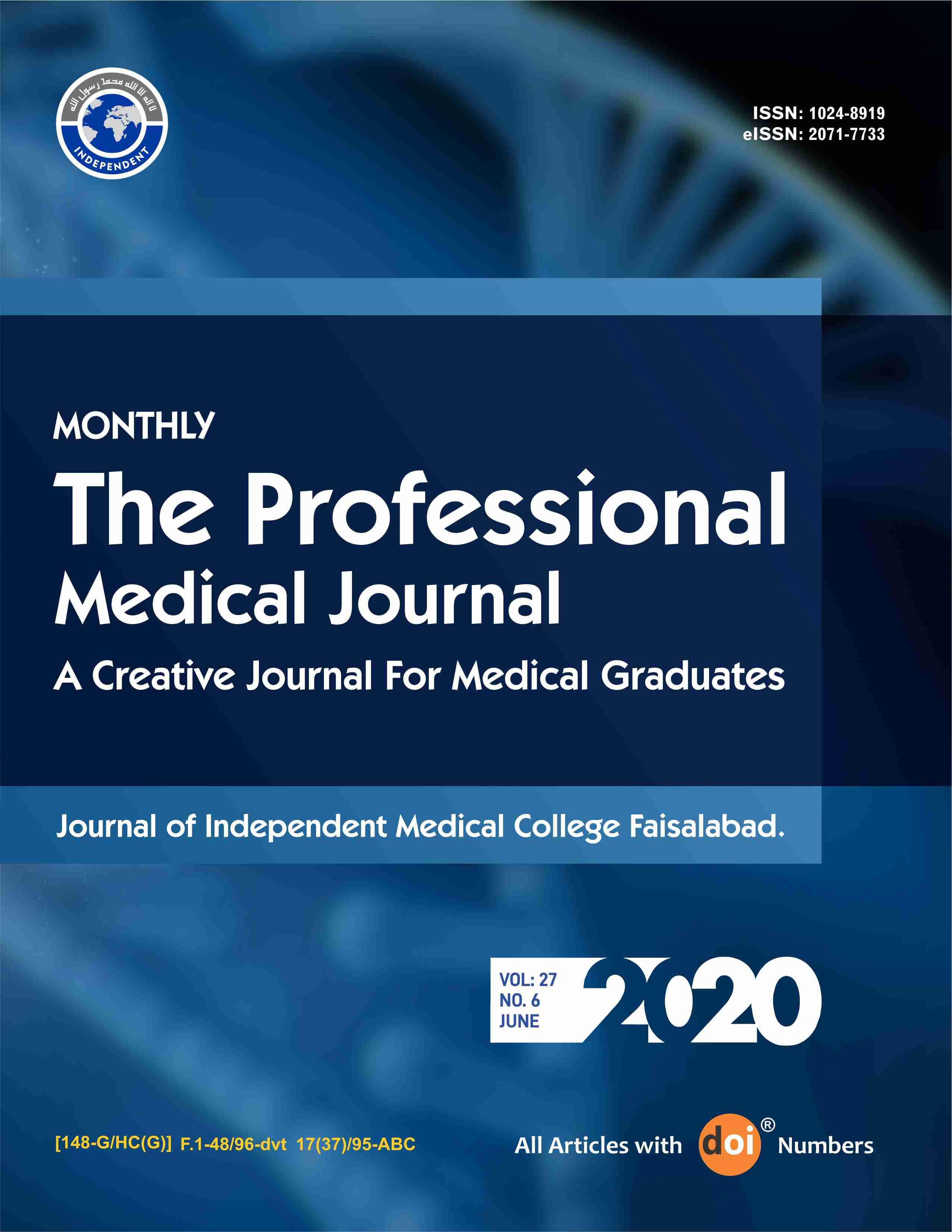IMPACT OF DURATION OF HEMODIALYSIS ON LIPID PROFILE IN END STAGE RENAL DISEASE PATIENTS RECEIVING HEMODIALYSIS.
DOI:
https://doi.org/10.29309/TPMJ/2020.27.06.4188Keywords:
Chronic Kidney Disease, Dyslipidemia, End Stage Renal Disease, HemodialysisAbstract
End Stage Renal Disease (ESRD) patients receiving hemodialysis are at a higher risk of developing dyslipidemia which is undoubtedly a predisposing factor of cardiac related disease in these patients. Objectives: To assess serum lipid profile in subjects having end stage renal disease and receiving maintenance hemodialysis and to compare it with normal healthy controls and also to assess the effects of duration of hemodialysis on the lipid profile. Study Design: A case-control study. Setting: Executed in the Nephrology Department of JPMC. Period: January 2018 to January 2019. Material and Methods: Blood samples were obtained from a total of 90 subjects. Subjects were stratified into 3 groups including cases of ESRD receiving maintenance hemodialysis and matched healthy controls. Analysis for serum triglyceride, serum VLDL, total cholesterol, LDL and HDL was done. Results: A significant rise in serum triglyceride content and total serum cholesterol of hemodialysis patients (p < 0.01) was detected as compared to healthy controls. A statistically significant decrease was found in serum HDL level (p < 0.01) in hemodialysis patients in comparison to healthy controls. The impact of the hemodialysis duration was found to deteriorate the lipid profile of patients having longer duration of hemodialysis. Conclusion: Dyslipidemia was found to be evident in hemodialysis patients. The duration of hemodialysis sessions was found to affect the lipid profile of ESRD patients, which may play a role in higher incidence of atherosclerotic related cardiac events among these patients.


